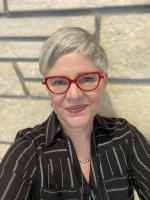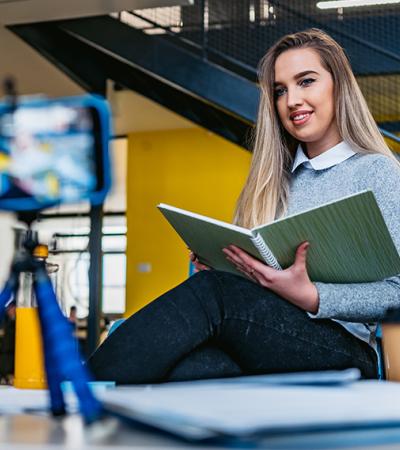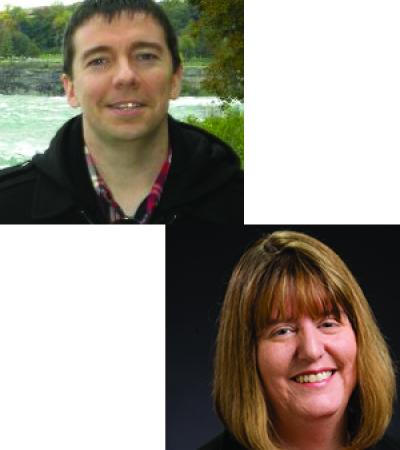“History is often associated with the past — events of someone or something not connected with us. There is nothing like a global health crisis, however, to realize we are making and living history right now.”
So began a March 23, 2020, open letter to the community from archivist and local history librarian Monique Sugimoto with the Palos Verdes Library District (PVLD).
As libraries across the nation were grappling with how to bring their programs online to serve their communities during the COVID-19 pandemic, Sugimoto decided one way she could help was to convert an in-person public scanning program to an online format, allowing contributors to donate historical images and documents from home during mandatory self-isolation periods. We talked with Sugimoto to learn more.

How did Your Story Is the Peninsula’s Story come about?
Monique Sugimoto: Your Story is the Peninsula’s Story (YSPS) started in 2016, funded in part by an IMLS grant (#40-8615) administered by the California State Library. By engaging the community in telling its own story, the goal of the project is to build a true community archive that captures the breadth of the Peninsula community and its rich past for future generations.
The images, texts and stories included in YSPS are contributed by community members — both longtime residents and newcomers. For several years, we solicited contributions through in-person scanning events held at the library and with community partners. We received many images that showed life on the Peninsula after the post WWII period, which is what we were hoping for, since that is when the Peninsula had a boom in population and development. These early residents helped build the community and we need to document their recollections and stories.
Having the ability to contribute remotely had been a longtime goal of the Local History Center. The coronavirus/COVID-19 pandemic was the perfect catalyst to move the program online. Since we started the program and with changes in technology, many people already have their materials in a digitized format, so bringing the effort online was the logical next step.
Why was it important to you to capture daily life from the pandemic?
In my letter, I asked, “How will this current public health crisis be remembered? I suggest it is much more than the number of cases and deaths; it is how each and every one of us is experiencing it in our day-to-day lives.”
I launched YSPS Online now to encourage the community to add images and stories of how their lives have been turned upside down with the current health crisis. People are working from home, homeschooling their children, figuring out new ways to serve their neighbors and communities. I wanted to give people an opportunity to document the reality of this extraordinary event and to give future generations an insight into how we lived through this. It is literally history in the making.

Tell us about the logistics. How did you go about setting up YSPS Online?
Creating YSPS Online required creating an online submission form and incorporating existing YSPS program documentation into the form. Working with my Digital Services Department, I created a four-part form using Google Forms with sections for project introduction, photo information and upload, contributor information and authorization.
The form now accepts .jpg and .tif files, but we’re thinking of video and audio file submissions, too. We also branded the form with the YSPS and Local History Center logos. For those who don’t have a Gmail account, they can contact me directly for assistance in uploading their images.
How did you get the word out to your community?
We used our library’s existing programming channels including our library newsletter, a local history group’s Facebook page and program announcements to each of the four cities in our service area and previous YSPS contributors. I was also contacted by a local newspaper reporter, who wrote an article about the project.
How do you handle submissions as they come in?
As with contributions from in-person YSPS scanning events, images submitted on YSPS Online are processed and added to PVLD’s existing digital repository, palosverdeshistory.org. The digital repository is built on the Islandora platform, which allows for bulk upload, though this takes a little more processing that I can’t do on my Mac at home.
Currently, I enter images one at a time using an XML template to expedite the upload process. Handling online submissions is actually easier than working with the handwritten submissions gathered from in-person scanning events. I had to alter our numbering system to track submissions but that was a minor consideration.
What are your hopes for this project going forward?
I started YSPS in response to a community needs assessment and comments that our Local History Center collection did not reflect the community and further that entire decades of documentation were missing. There was also a desire to have more materials online. Going forward, I hope that we’ll be able to continue to address these needs and supplement our collection so that it really does reflect our community. YSPS Online is just one more way to do that.
One of the outcomes of the YSPS project was increased awareness and visibility of the Local History Center and its mission to preserve the history of the Peninsula. This has brought more and more donations of letters, organization records, maps and other physical materials to the Center. Perhaps during this crisis, diaries and journals kept by community members documenting their experiences during this health crisis will come in too, bringing with it a potentially rich source of primary resource for future researchers, especially students.
If you are interested in contributing to the Peninsula Coronavirus Collection or have questions on starting your own "YSPS Online," contact Sugimoto at the email address at the bottom of her letter.



